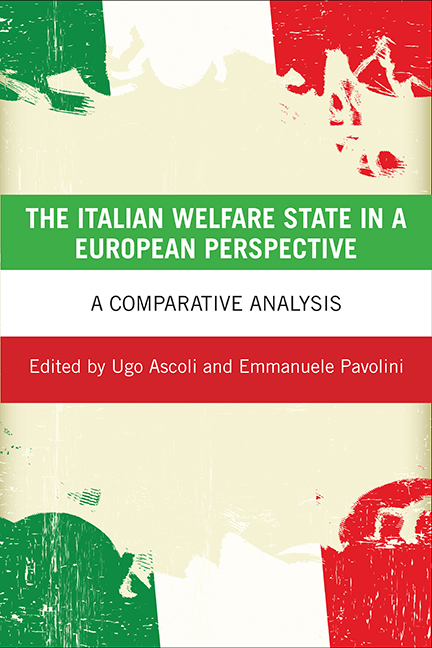ten - The Europeanisation of the Italian welfare state: channels of influence and trends
Published online by Cambridge University Press: 08 March 2022
Summary
Introduction
Over the past decades, the role of the European Union (EU) has been extremely important in influencing welfare reforms in Italy. Many in the literature (starting with Dyson and Featherstone, 1996) have treated Italy as the paradigmatic example of the Europeanisation of national welfare states. This is the case of the so-called Maastricht criteria in the run-up to European Monetary Union (EMU), which represented an explicit pressure on Italian governments to revise the system and put its cost under control. Beyond economic coordination and the launch of the EMU, many other instruments have allowed the EU to exert adjustment pressure on the Italian welfare state: from social regulation to the Open Method of Coordination (OMC), and from structural funds to EU regulations on the free movement of workers and services.
Several contributions have investigated the role of the EU in Italian welfare reforms in the past (Ferrera and Gualmini, 2004; Ferrera and Sacchi, 2005; Sacchi, 2007; Graziano and Jessoula, 2011). In this chapter, we look at the most recent evolution of the complex interplay between EU and domestic policymakers. We refer to Europeanisation as the process of ‘domestic adaptation to European regional integration’ (Graziano and Vink, 2008: 7). The chapter has both descriptive and analytical aims. It first maps the key European governance and policy instruments that have shaped welfare reforms in Italy since the 2000s. The composition of EU instruments has changed over time and, especially in the shadow of the crisis, new instruments have been added. We then refer to the channels whereby the influence – both direct and indirect – of the EU on the Italian welfare state has occurred. Then, we address the question of whether – and how – EU pressure has become greater, especially in the wake of the Great Recession and the Eurozone crisis. While we emphasise the constraining impact of the EU on national welfare policies (with an increased pressure for cost containment), we show evidence of the often neglected positive influence in terms of the modernisation of the Italian welfare system and its equality. Structural funds and policy coordination in the social field have provided support for domestic reformers to revise the Italian welfare state, and shaped reforms.
- Type
- Chapter
- Information
- The Italian Welfare State in a European PerspectiveA Comparative Analysis, pp. 259 - 282Publisher: Bristol University PressPrint publication year: 2015



